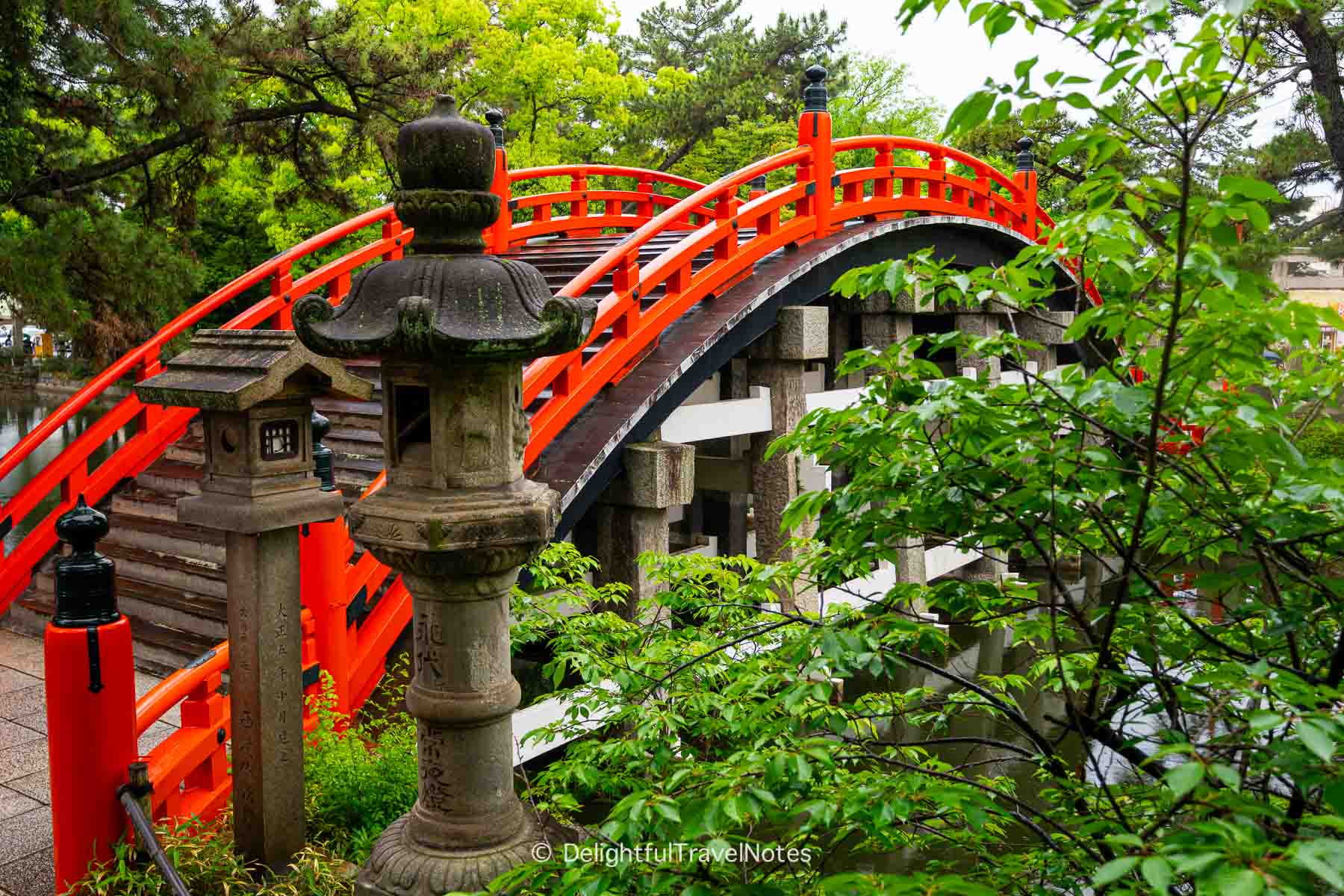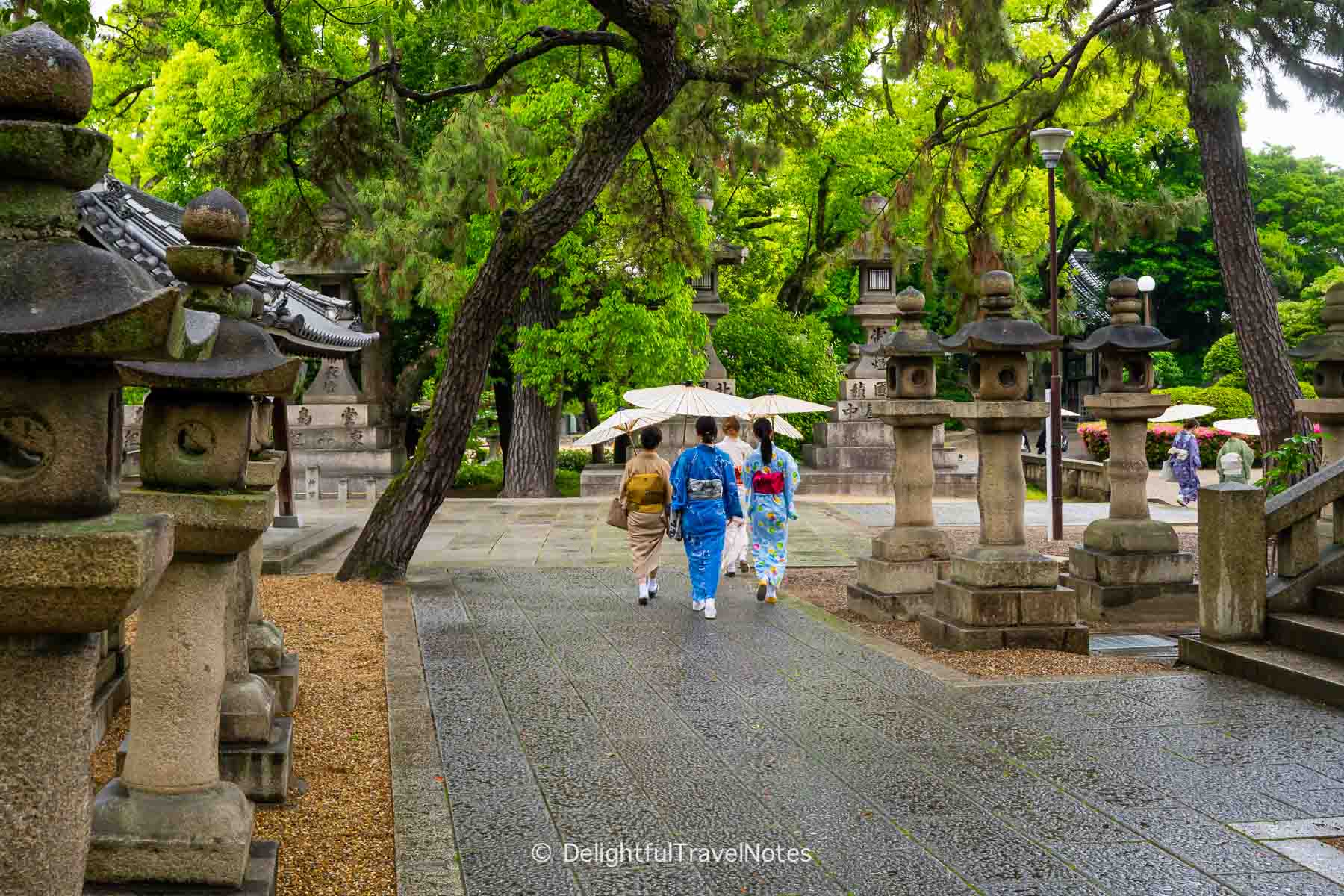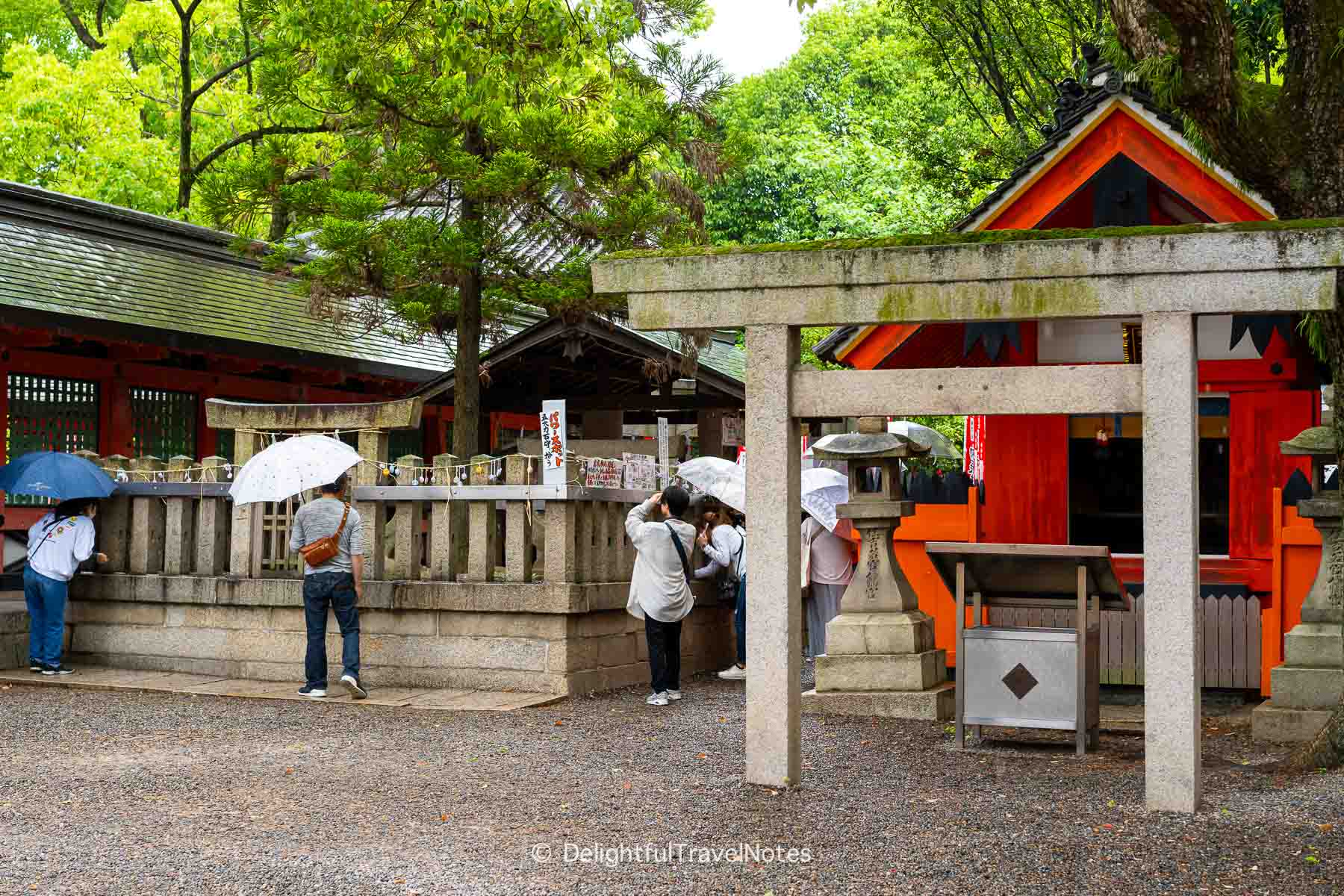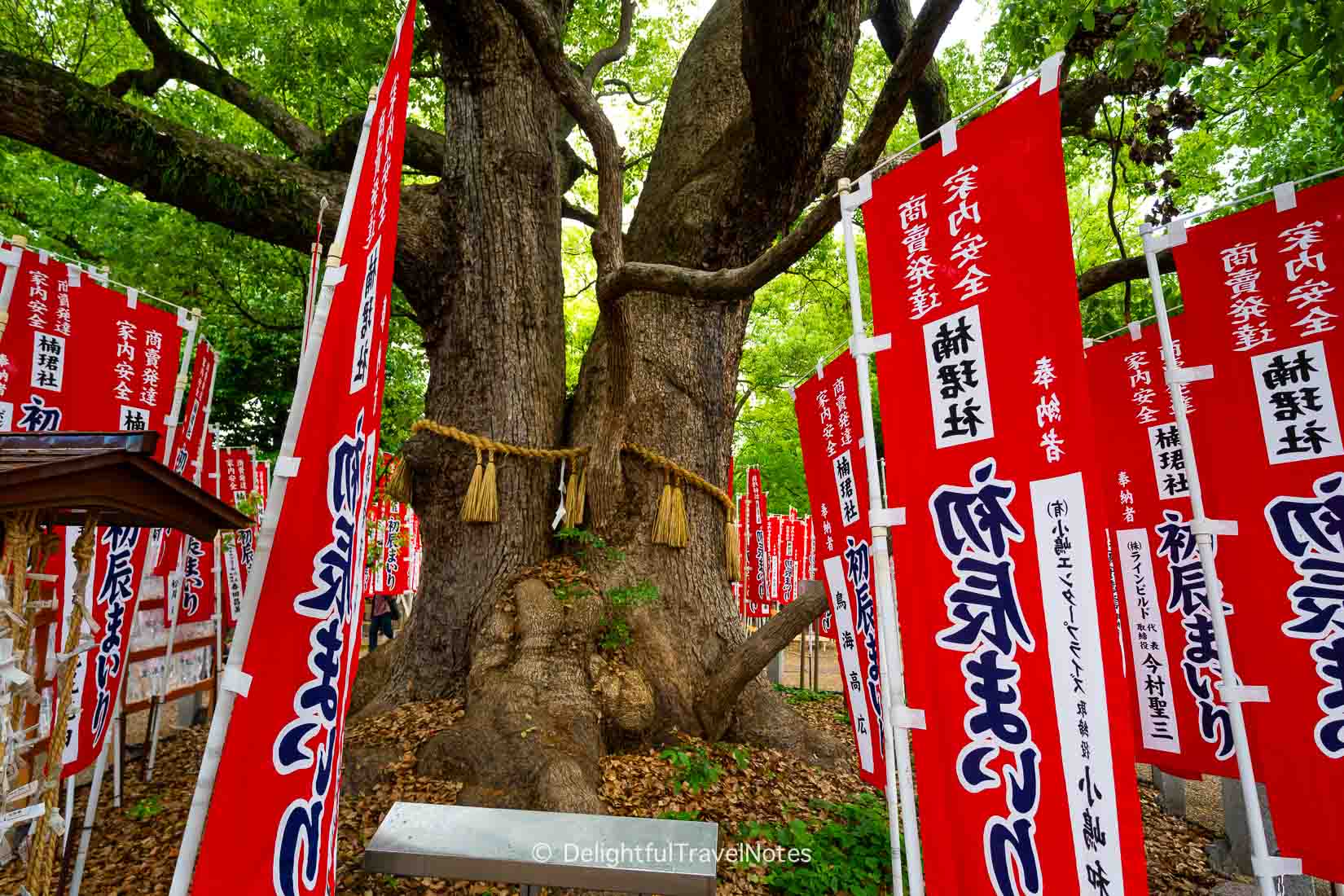Sumiyoshi Taisha – A Must-See in Osaka for Cultural Lovers
Osaka may not be as famous for its temples and shrines as Kyoto, but Sumiyoshi Taisha is definitely worth visiting for its special architectural styles and cultural aspects. Sumiyoshi Taisha is an active place of worship where Japanese people come to perform various Shinto rituals, not a tourist-oriented shrine. It is a must-see in Osaka for those who want to learn more about Japan’s cultural and religious practices.

I often feel a bit sad when coming across comments suggesting that after visiting several shrines and temples in Japan, they fell that all sites start to look the same. For us, each site has its own unique features that make it memorable, whether through its architectural styles, beautiful gardens, or cultural and historical significance. Often, you may need to do some reading or research to appreciate the details. It would be more helpful if each site provided more information to visitors. By sharing our observations at Sumiyoshi Taisha, we hope to persuade you to give it a visit and discover the distinctive charm that each shrine and temple in Japan holds.
Sumiyoshi Taisha Overview
History: Sumiyoshi Taisha is one of the oldest and most important Shinto shrines in Japan. Established in the year 211 by Empress Jingū, the shrine was built to enshrine the Sumiyoshi Sanjin, three deities associated with sea travel and the protection of sailors, boats, and fishermen.
Nowadays, the shrine is completely landlocked but it is said that it once faced the sea in the past. If you visit the Osaka Museum of History (which is right across from Osaka Castle grounds), you will see this old painting depicting the scene of locals collecting clams near from the beach near the shrine, a tradition that took place in late spring in the past.

Location: The shrine is located just a few minutes’ walk from Sumiyoshi Taisha Station on the Nankai Line. Staying at the Swissotel Nankai, we took the train from Namba Station and the ride was just 15 minutes. The shrine grounds are spacious with a different atmosphere offering a stark contrast to the busy areas of Dotonbori or Shinsaibashi, and the modern Umeda district.
Iconic Sorihashi Bridge

Upon entering the shrine grounds via the main entrance, you immediately see the iconic arched bridge, also known as Taiko-bashi (the drum bridge). This vibrant vermillion bridge is especially striking on clear days when its reflection over the water creates a beautiful scene. It is a popular spot for photography due to the unique shape and picturesque setting.

Unfortunately, it rained heavily during our visit, so we couldn’t see a perfect reflection. However, the scenery was still lovely with some azaleas in bloom. From the top of the bridge, visitors can enjoy scenic views of the surrounding shrine grounds.
After crossing this steep bridge, pay attention to the temizu-sha (purification fountain) on the left. The water that fills the basin streams out of the mouth of a stone rabbit. Sumiyoshi Taisha has a special connection to rabbits, as it was founded on the day of the rabbit, in the month of the rabbit, and in the year of the rabbit. Because of this, you’ll find rabbit stones and symbols scattered throughout the shrine grounds.

The purification fountain is for visitors to perform a ritual cleansing to purify themselves before approaching the main shrine buildings. You can read more about it in my temple and shrine etiquette in Japan post.
Main Halls
Sumiyoshi Taisha has four main halls dedicated to the three Shinto deities of the sea and Empress Jingu. When you look at the official map of the shrine grounds, you will see these four buildings labeled as Dai-ichi Hongu, Dai-ni Hongu, Dai-san Hongu, and Dai-yon Hongu, which translate to Main Shrine #1, #2, #3, and #4 respectively. As you approach from the main entrance and cross the Sorihashi Bridge, you’ll first encounter Main Shrine #3 and #4, followed by #2 behind them, and finally #1 at the end.

The alignment of these shrines is quite unique. Main Shrines #1, #2, and #3 are arranged in a vertical line, while Main Shrine #4 is positioned horizontally next to Main Shrine #3. Some sources say this unusual placement resembles a fleet of sailing ships.
These main halls were constructed in the Sumiyoshi-zukuri style, one of Japan’s oldest native shrine architectures. This style is distinct for its simplicity and lack of external influences, such as those from China. The structures feature straight, sloped roofs without upward curving eaves. At the top of the roofs are crossed roof finials called chigi, which are particularly eye-catching and something we hadn’t seen at other shrines we visited in Japan.

At some point, a wide porch was added to the front of each main hall. These front porches have a different architectural style with curved roofs and more familiar ornamentation that can be seen in other shrines. I found this article that provides more detailed information about the architecture of these main halls.

Shinto Rituals
One of the highlights of our visit to Sumiyoshi Taisha was witnessing Shinto rituals that we hadn’t encountered before, beyond the commonly seen practices such as purification, praying, and weddings. Initially, we came primarily to see the bridge and expected a quick visit, but we ended up staying much longer to observe these fascinating rituals. We visited on a Sunday, and although the grounds were busier than online reviews suggested, this allowed us to see some interesting activities.

Hatsu Miyamairi
We noticed that a lot of families brought their newborns to the shrine. It turns out to be a Shinto ceremony called hatsu miyamairi (first shrine visit), which is the newborn baby’s first visit to a Shinto shrine. During this visit, families express gratitude to the deities and receive blessings for their baby’s health, happiness, and protection.
Goshogozen
Goshogozen is a sacred place behind the Main Shrine #1. This area is enclosed by stone fences and covered with pebbles beneath a cedar tree. Here, worshippers search for special pebbles with the characters: 五 (go – five), 大 (dai – large/big), and 力 (riki – power/force). These five great forces are Physical Strength, Intelligence, Financial Strength, Fortune, and Longevity. They say if someone finds all three stones, their wish may come true.


The stone torii next to Goshogozen area in the photo above is called Sumiyoshi torii. All the stone bars and pillars are straight with square ends. Additionally, the lower horizontal bar does not protrude beyond the pillars, unlike many other torii gates.
Sub-Shrines
The precinct of Sumiyoshi Taisha is much larger than we expected. It’s quite pleasant to stroll along paths lined with cedar trees, flags and stone lanterns. These red flags seem to bear the names of donors or prayers as Sumiyoshi Taisha is also known as a place to pray for the prosperity of business.

We stopped by Nankun-sha, one of the sub-shrines on the grounds. Visitors come here to pray for business success and the power to attract people. Additionally, they can purchase lucky cat figurines, which are believed to bring good fortune.
In front of Nankun-sha, there is a purification fountain where water streams out of the mouth of a dragon. There’s also a sacred camphor tree which is said to be 1,000 years old. This tree is impressively huge, even more so than the camphor trees found on the grounds of Meiji Jingu I think.


Goshuin Information
Sumiyoshi Taisha offers goshuin (shrine stamps) and several beautifully designed goshuincho (stamp books). I bought one goshuincho with the arched bridge and chigi on the front cover. The other design features the bridge and rabbits. You’ll find the goshuin office shortly after crossing the bridge, before entering the area where the main shrines are.
Nankun-sha also has its own goshuin. I obtained a special embroidered goshuin here which is quite cute. I didn’t check if other sub-shrines also have their own stamps. If you want to learn more about collecting goshuin, check out my goshuin guide here.



Explore More
TeamLab Borderless in Tokyo: Thoughts on Why Some People Like It and Some Don’t
Fall Foliage at Eikan-do in Kyoto: Day and Night Illuminations Comparison
Hogon-in Fall Foliage: Beautiful But Not the Best Spot in Kyoto